Jasmine Rice Recipe (stovetop)
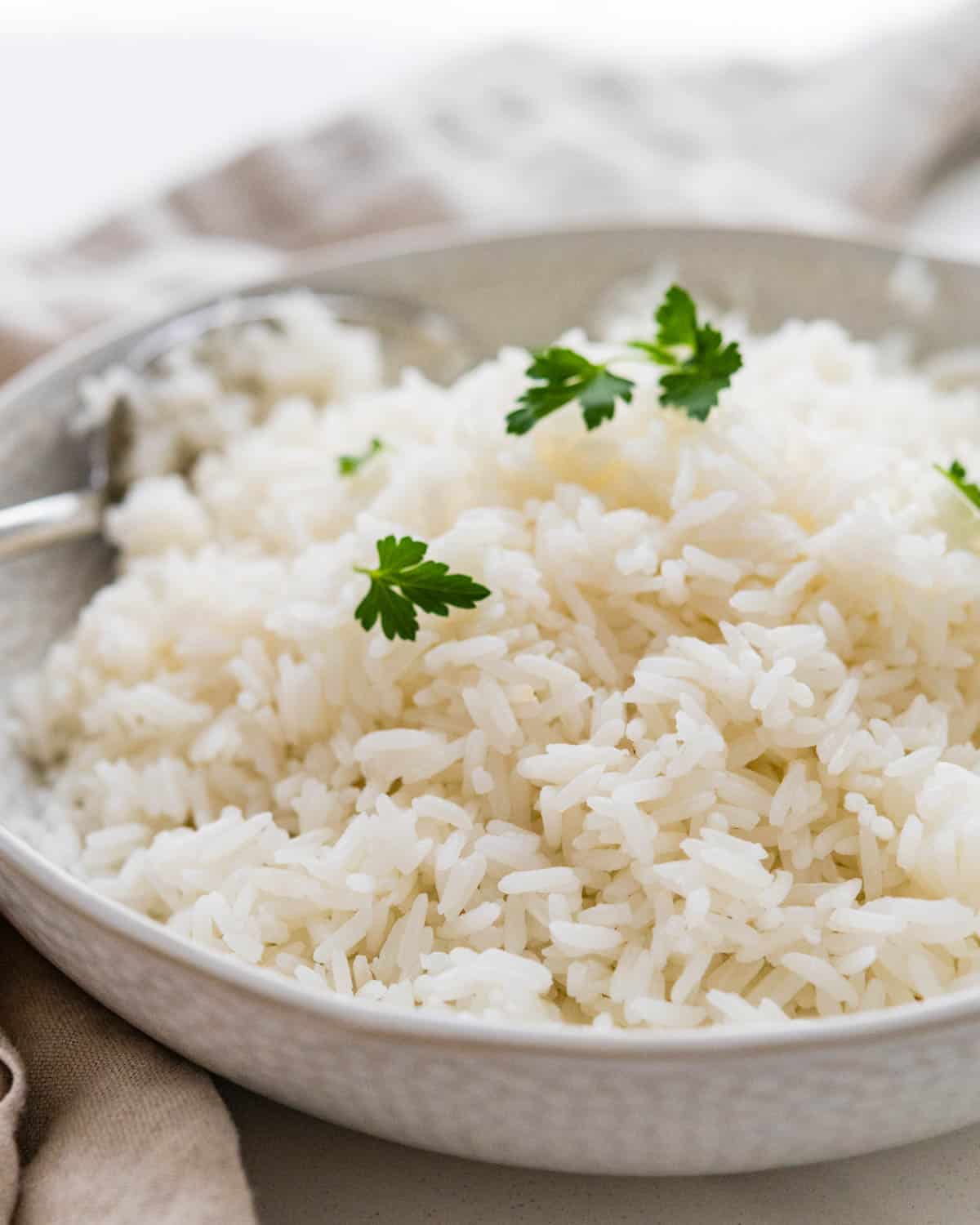
Inside: Learn how to cook jasmine rice at home with pro tips from a restaurant chef.
Jasmine rice has a firm, sticky texture, nutty aroma, and flavor. It’s an essential ingredient for Thai cuisine and is simple to make. However, it cooks in less time and requires less water than most, so having a good jasmine rice recipe is imperative for getting it right. Here’s how to cook jasmine rice, from getting the right ratio to how long to cook it for perfectly fluffy grains.
The first time I cooked jasmine rice, I paid no attention to the directions and cooked it the way I normally cooked white rice: with a 2:1 water-to-rice ratio and an 18-minute cooking time. I ended up with a gloopy, soggy mess and had to start over.
I researched why cooking jasmine rice differed from other varieties and got a new appreciation for this Southeast Asian commodity.
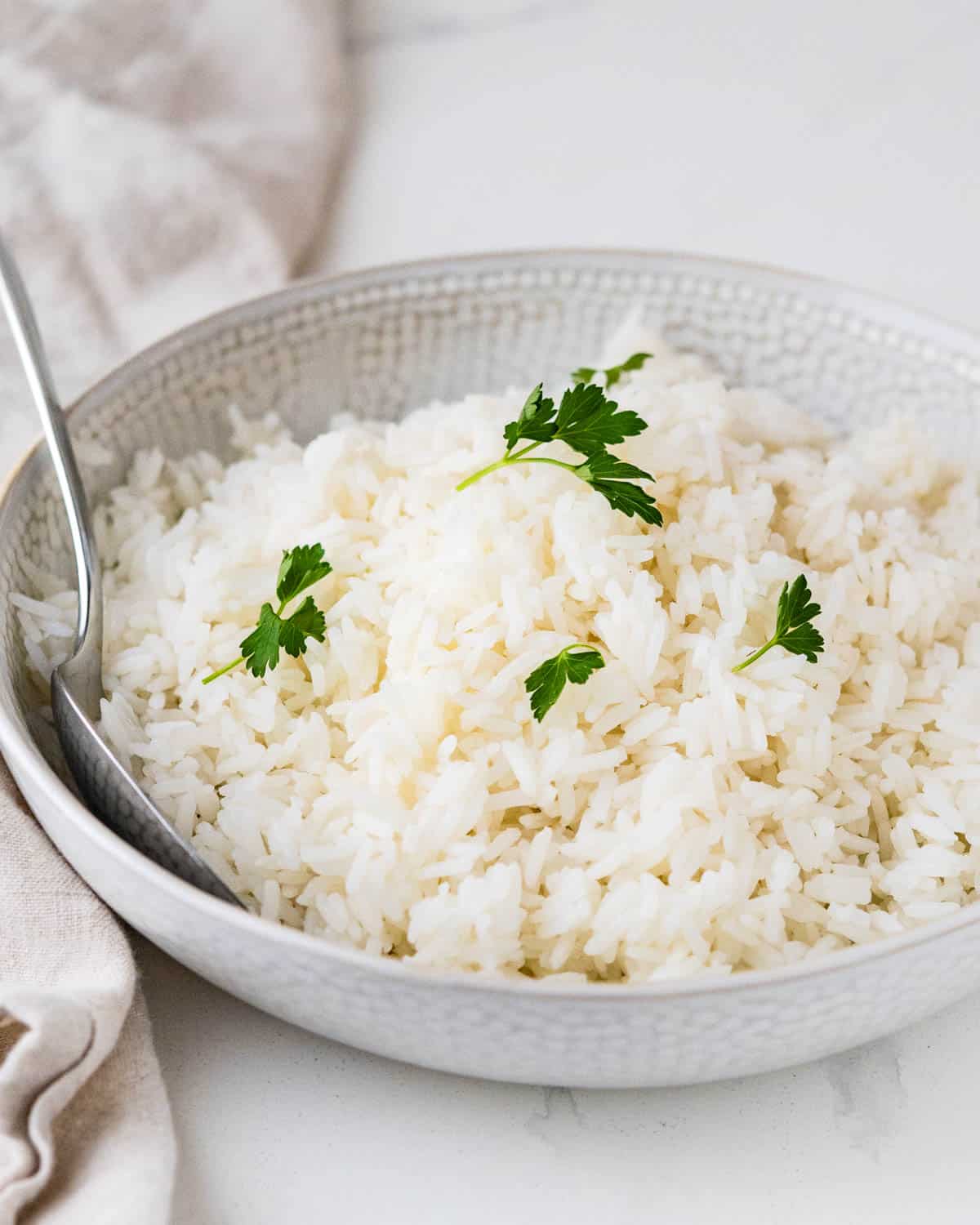
Table of Contents
What makes jasmine rice special
Jasmine is considered a long-grain aromatic rice, a designation given to 202 varieties, according to The Thailand Foundation.
It needs less water to cook than other varieties because its moisture content is higher. It also requires less cooking time on the stove but more resting time reabsorbing the steam.
The grains hold their texture when cooked or steamed but are also stickier than many rice varietials.
But what makes this so distinct is the aroma. It’s soft and fragrant (some equate it to pandan; it reminds me of popcorn). The notable fragrance is most apparent closer to the harvest, and is known as “new crop.”
The new crop designation means that the rice was harvested recently. For instance, a new crop in 2024 likely means it was harvested in the last quarter of 2023. The scent begins to diminish after about 8 weeks; however, the grains will last up to 2 years.
Why this recipe works:
- Excess starch is rinsed off the jasmine rice before cooking to prevent a gluey texture.
- It cooks in two steps: boiling and then steaming. The boiling infuses it with just enough water to plump grains without becoming mushy; steaming allows it to absorb residual water for a fluffy, slightly sticky or tacky texture that’s ideal for serving with many recipes.
- The same cooking technique applies whether or not you’ve sourced new crop.
- Freshly steamed, it’s a perfect base for stir-fries and saucy recipes, performing as a neutral base against aggressively seasoned Asian-inspired dishes
- You can make it in advance for fried rice the next day.
Ingredients you’ll need:
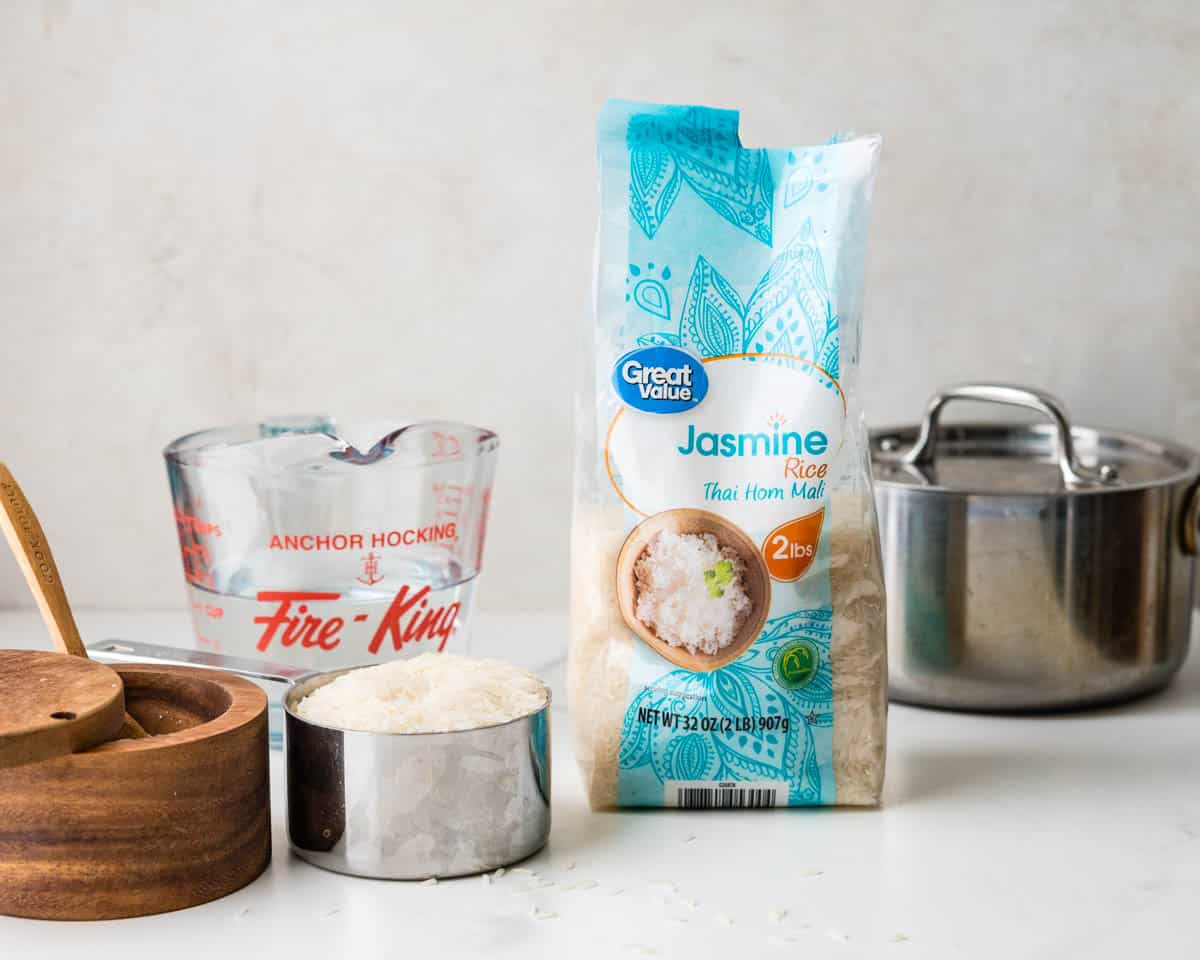
- Jasmine Rice – Chef and James Beard Nominee Kris Yenbamroomg of Night + Market recommends buying product sourced from Thailand, but it is also grown in Laos, Cambodia and Vietnam. This Reddit user says he almost cried when he tasted it.
- Water – Cool tap water is perfect for rinsing and cooking.
- Salt – I used kosher salt, but you can use regular iodized salt or sea salt.
Step-by-step instructions:

- Rinse rice—in a fine mesh strainer, rinse it three times with cold water to remove excess starch. The water should run clear. Shake the sieve very well to remove the excess water. (The grains can hold the excess water after rinsing it, adding as much as 2-3 tablespoons more water, which will affect the texture of the cooked rice. Spend a minute shaking away the excess; it’s worth it.)
Some people skip rinsing, but this extra step helps to ensure a tender, fluffy texture that’s not too dry or too wet.
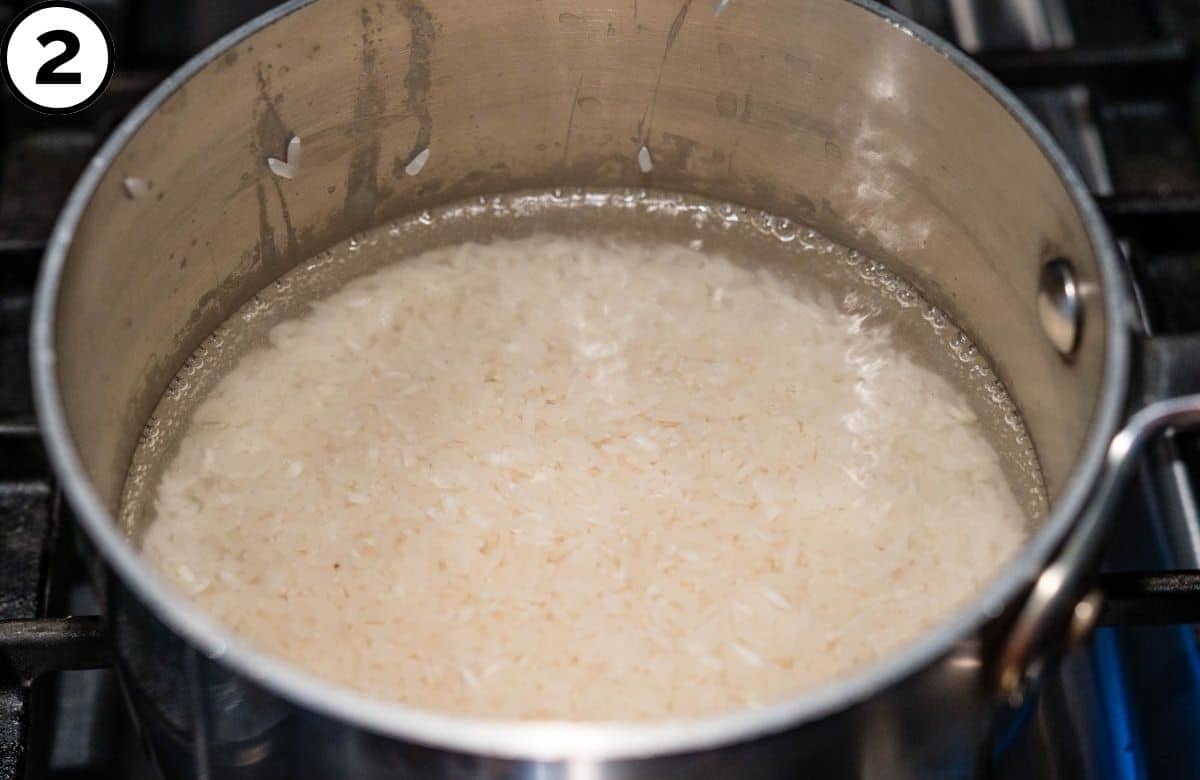
2. Transfer the rice to a small saucepan (with a tight-fitting lid) and add 1¼ cups of water and ¼ teaspoon salt. Bring the pot to a boil over high heat, stirring a few times. Once the water boils, cover it with the lid and reduce the heat to its lowest setting. Simmer for 12-15 minutes without lifting the lid.
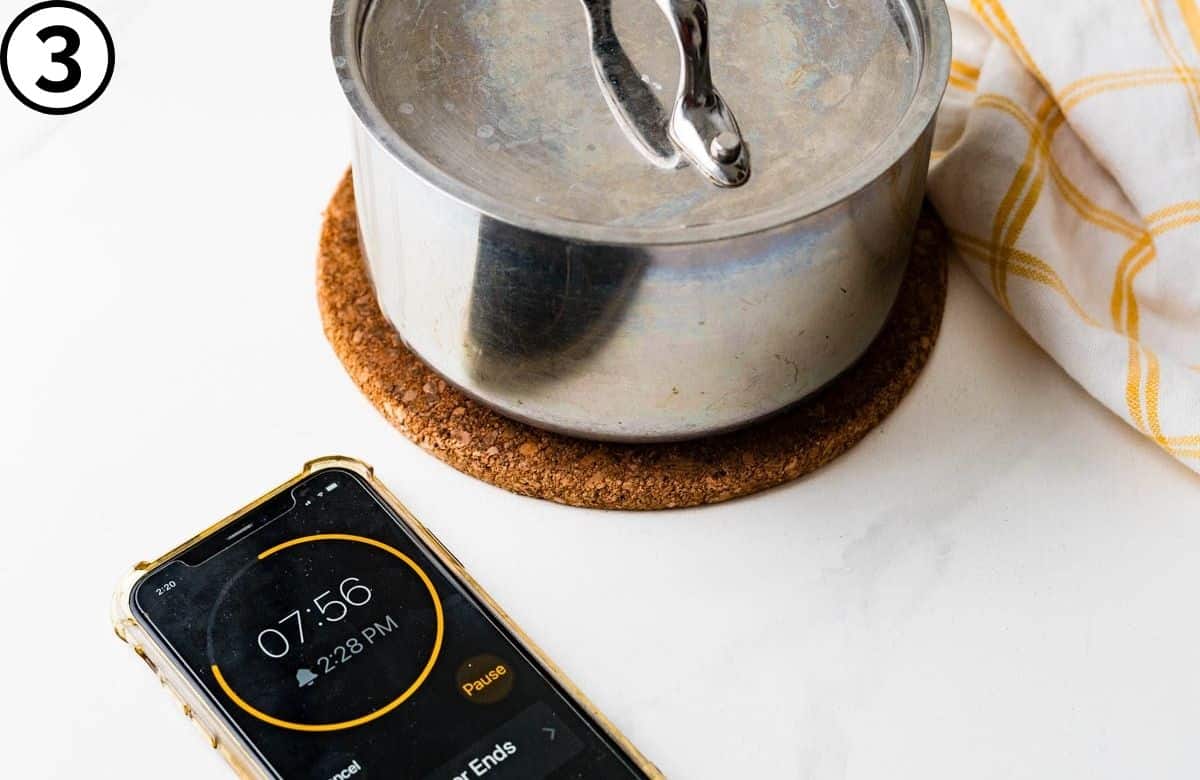
3. Check the pot —no more water should be left, and the grains should be tender but firm. If water remains in the pot, continue to cook for a few more minutes until it is absorbed. Remove the pot from the heat and let the rice steam with the lid on for 10 minutes.
Resting the cooked grains is important. It gives them the opportunity to absorb the excess steam—and since we’ve used less water and cooked it for a shorter time, this extra step ensures a perfect texture.
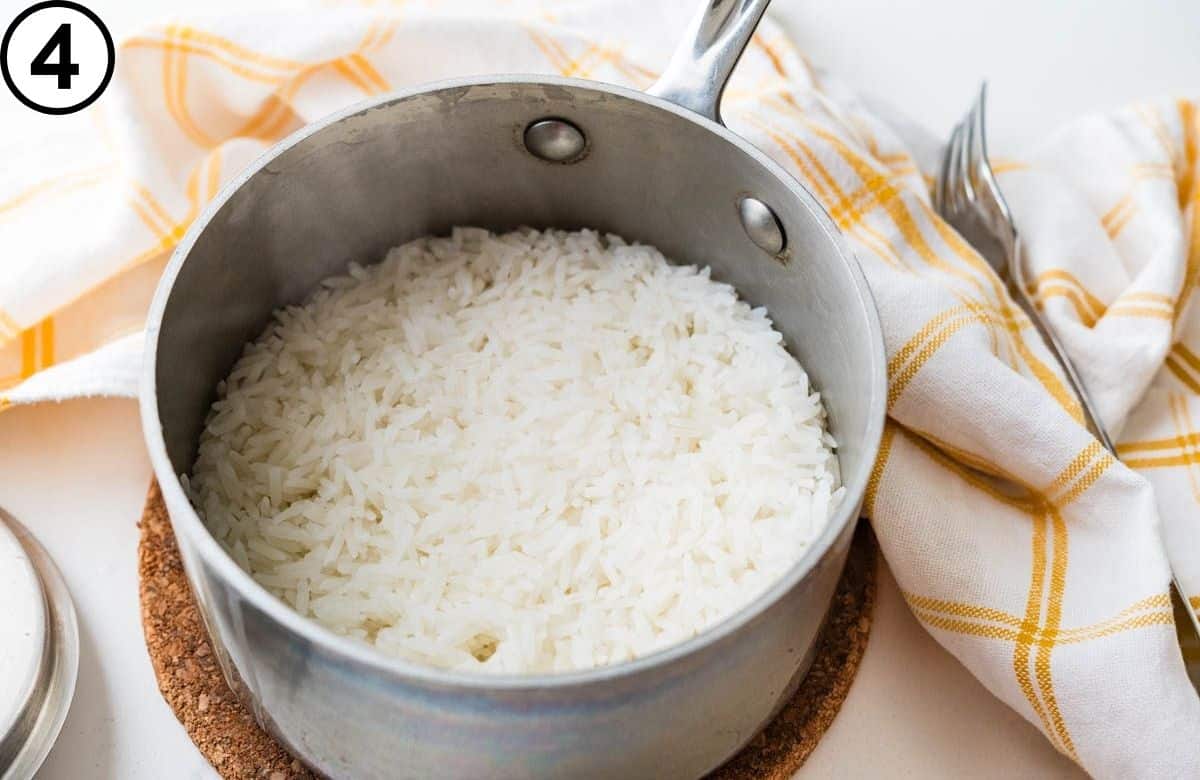
4. Remove the lid – it should look fluffy, with vent holes where the water and steam surfaced.
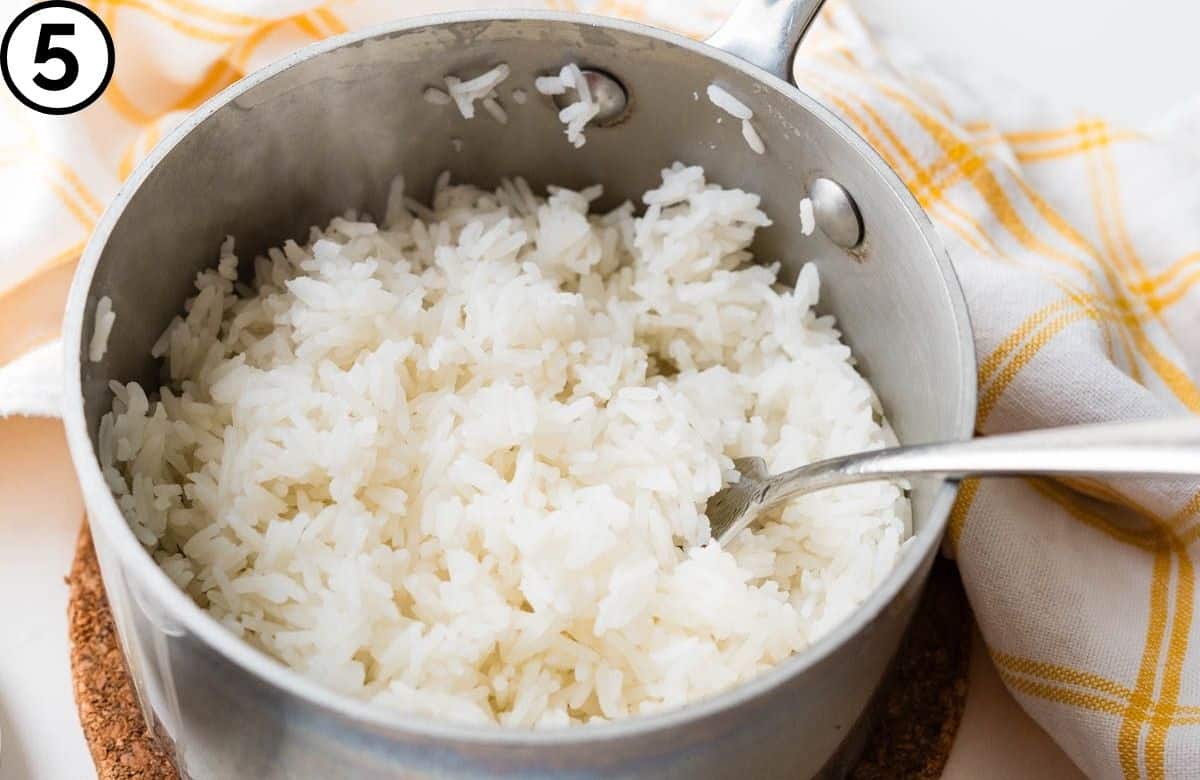
5. Fluff the grains with a fork. They should be firm, not soggy, and slightly sticky or tacky.
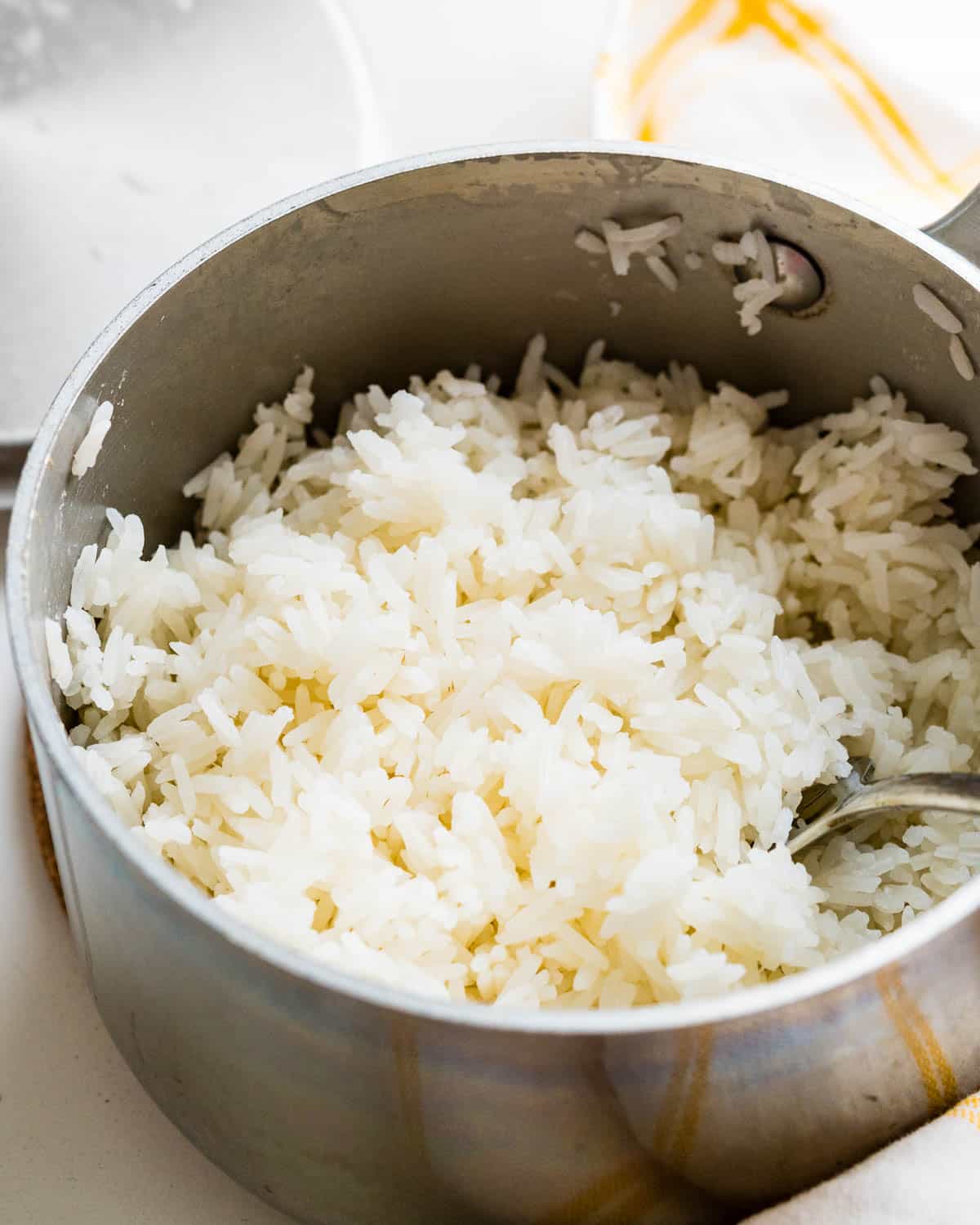
Pro-Tips:
- Use long-grain jasmine rice from Southeast Asia, ideally Thailand. Look at the package to be sure. I used Great Value brand (from WalMart). It is sourced from Thailand – with no designation of “new crop.”
- Different brands may vary slightly in how much water is required. The instructions on my package called for 1½ cups of water. Chef Kris Yenbamroong recommends a jasmine rice-to-water ratio of 1 : 1¼ cups, which I did successfully.
- Letting the rice steam after cooking is the secret to a fluffy texture.
- Chef Yenbamroong recommends a rice cooker, calling it “an indispensable tool found in any Thai kitchen.” I don’t cook this grain daily, so having an appliance for that express purpose seems superfluous, especially when cooking jasmine rice on the stove is doable and easy.
- If you do use a rice cooker, he recommends wiping it down every so often, so the starchy steam doesn’t clog up the vents.
- You can easily double this recipe; just use a large pot.
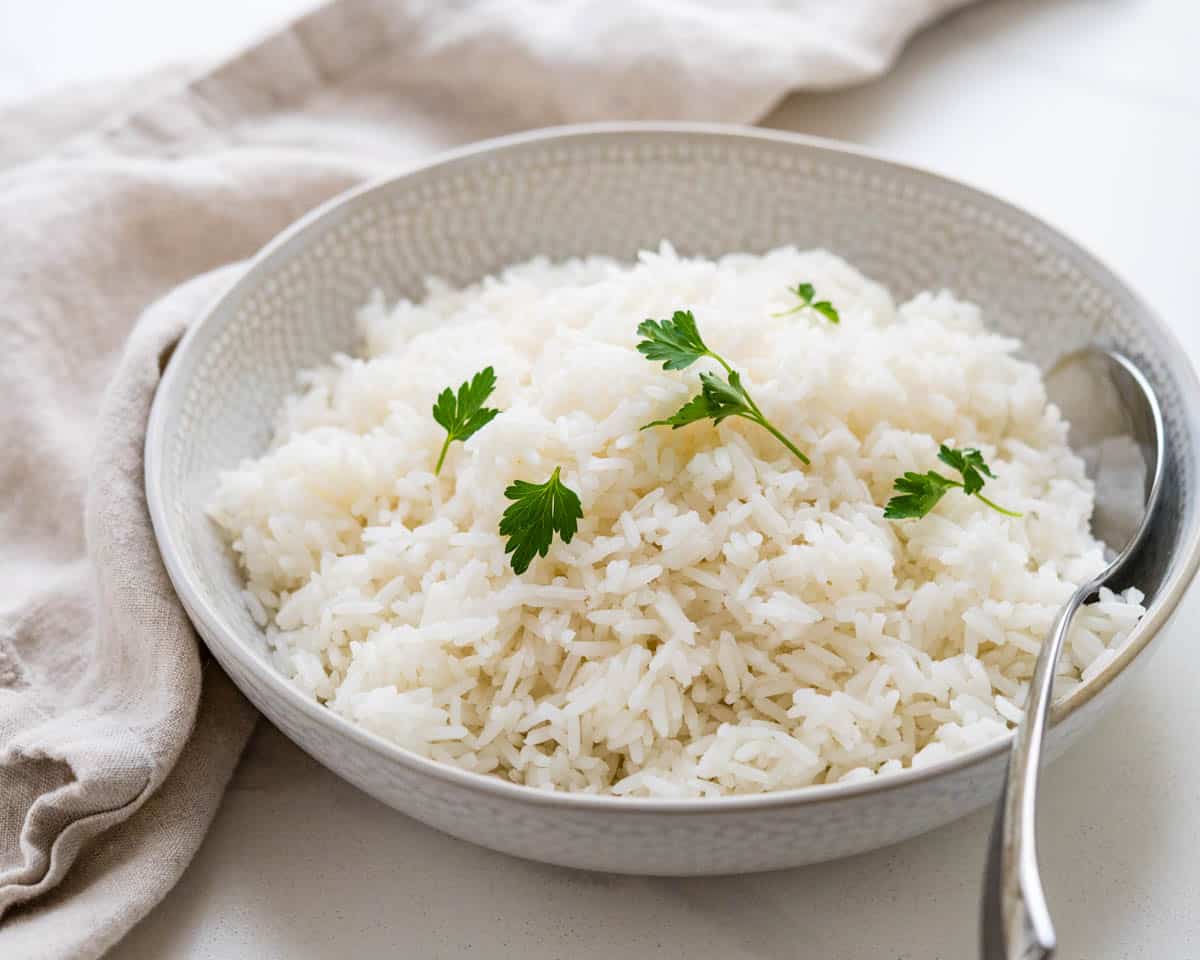
Variations:
- Use a rice cooker instead of the stovetop method (instructions in the recipe card, below), but be sure the jasmine rice:water ratio stays at 1:1 ¼ and disregard the markings in the rice cooker.
- For extra flavor, add a pat of butter (about a teaspoon) when cooking.
- Add chopped cilantro, a teaspoon of lime zest and squeeze of lime juice for a cilantro lime rice.
- Serve it with Asian stir-fries, Indian curries or anything with an assertive saucy flavor you need to balance.
Storage:
- Store jasmine rice in an airtight container in the fridge for up to 5 days.
Reheating:
- I recommend reheating in the microwave (quick and easy) or steaming the rice on a plate or bowl set in a pot with a steamer insert. Bring about ½” of water to a boil in the bottom of the pot, place the plate on the insert and arrange it in the pot above the water. Place the lid on the pot and steam for 2-3 minutes to heat through.
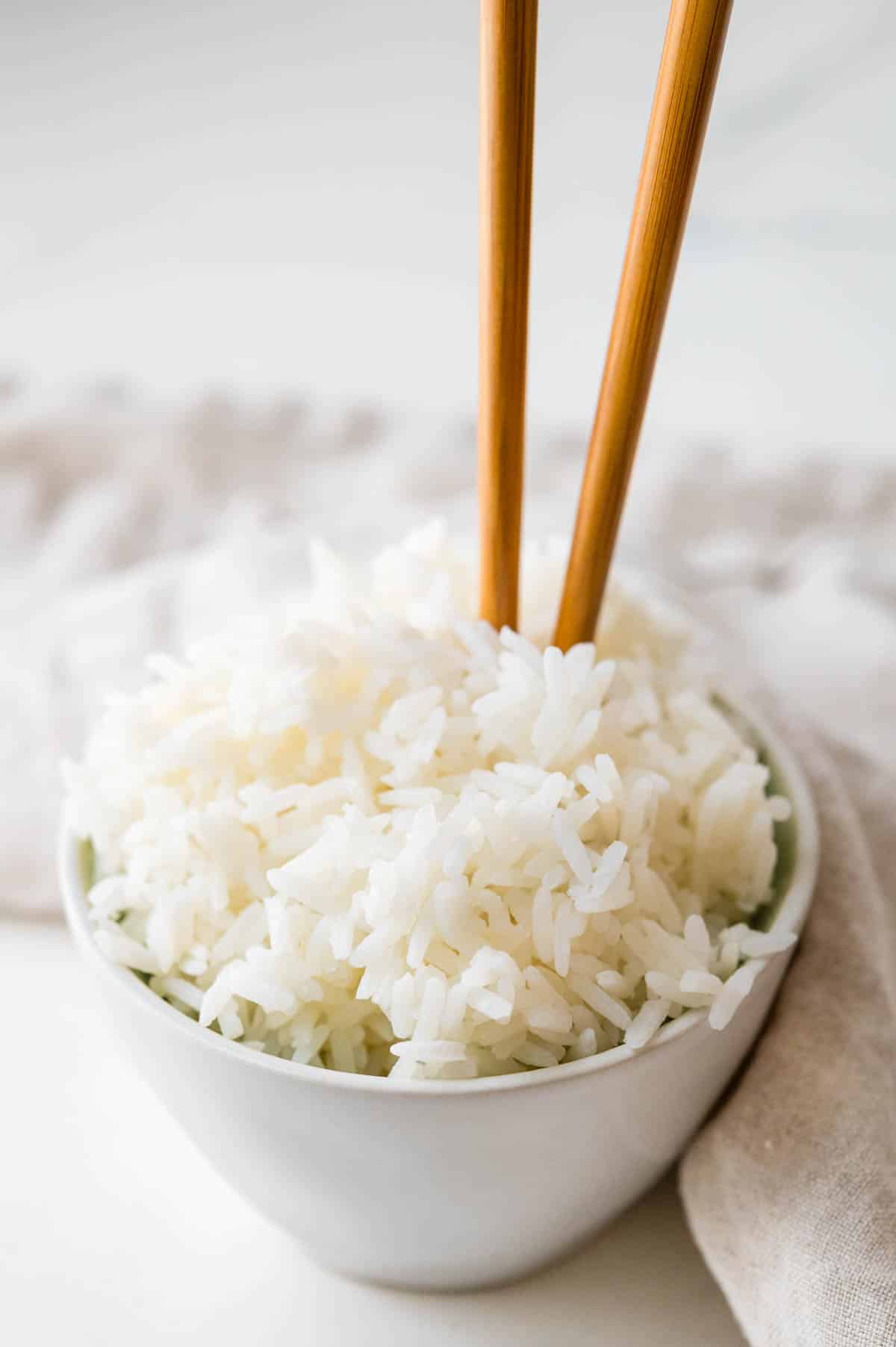
More rice recipes to try:
- Mexican Red Rice (Arroz Rojo)
- Sicilian-Style Brown Rice Salad
- Saffron Rice
- Green Rice (Arroz Verde)
- Creamy Coconut Mango Rice

Tried this recipe? Leave a rating and review.
Your comments and shares are invaluable to me and the thousands of readers who use this site daily. If you've made the recipe, leave a star rating and review. We want to hear how you liked it.
We'd love it if you shared the recipe with your friends on social media!
Jasmine Rice Recipe (stovetop)
SPECIAL EQUIPMENT:
- 1 saucepan with a tight-fitting lid
INGREDIENTS:
- 1 cup Jasmine Rice
- 1¼ cups cool water
- ¼ teaspoon salt I used kosher salt
DIRECTIONS:
- Measure 1 cup Jasmine Rice into a fine mesh sieve and rinse it with cold water three times to remove excess starch – the water should run clear and not be cloudy. Shake it well to drain the excess water that around the grains from rinsing.
- When it stops dripping, transfer them to a saucepan and add 1¼ cups cool water and ¼ teaspoon salt. Bring the pot to a boil, uncovered, over high heat, stirring occasionally.
- When the water boils, stir a few more times, then cover with the lid and reduce the heat to its lowest setting. Simmer for 12-15 minutes without lifting the lid. (If your stove runs hot, start checking at 12 minutes)
- Check the rice, there should be no water left and the grains should be tender, but firm. If there’s still water left or the grains are hard, continue cooking for a few more minutes.
- Remove the pot from the heat (with the lid on) and set your timer for 10 minutes to steam the rice. Remove the lid and fluff the grains with a fork.
NOTES:
- Transfer the rinsed and drained grains to a rice cooker; spread into an even layer.
- Add the water (ignore the markings on the appliance) and salt, and press the button to start cooking.
- Once the timer is done, let it sit for 5-10 minutes with the lid closed to finish steaming – the rice will reabsorb some of the water back into the grains.
- Use a fork to gently fluff the grains. Serve.
NUTRITION:
Pin it for later!
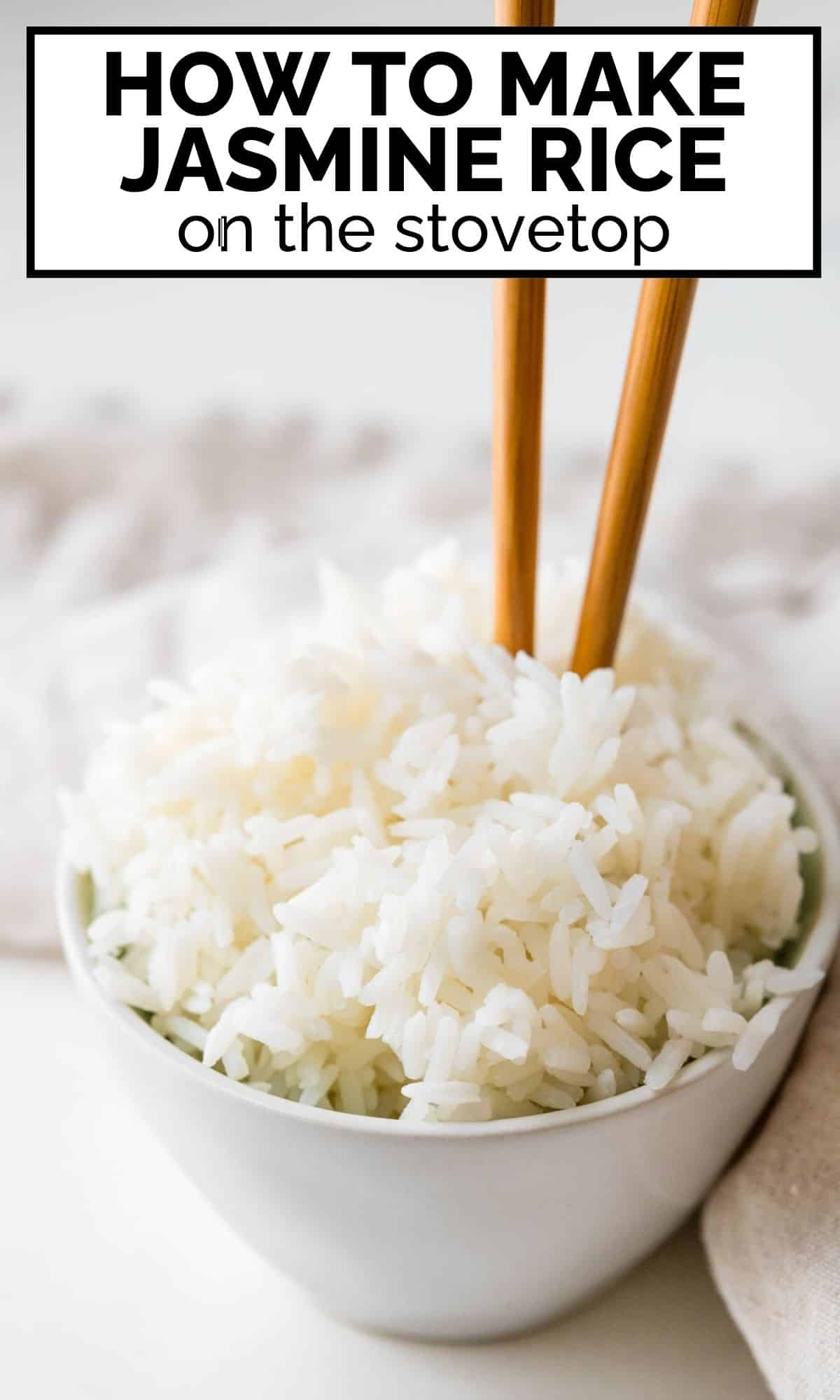


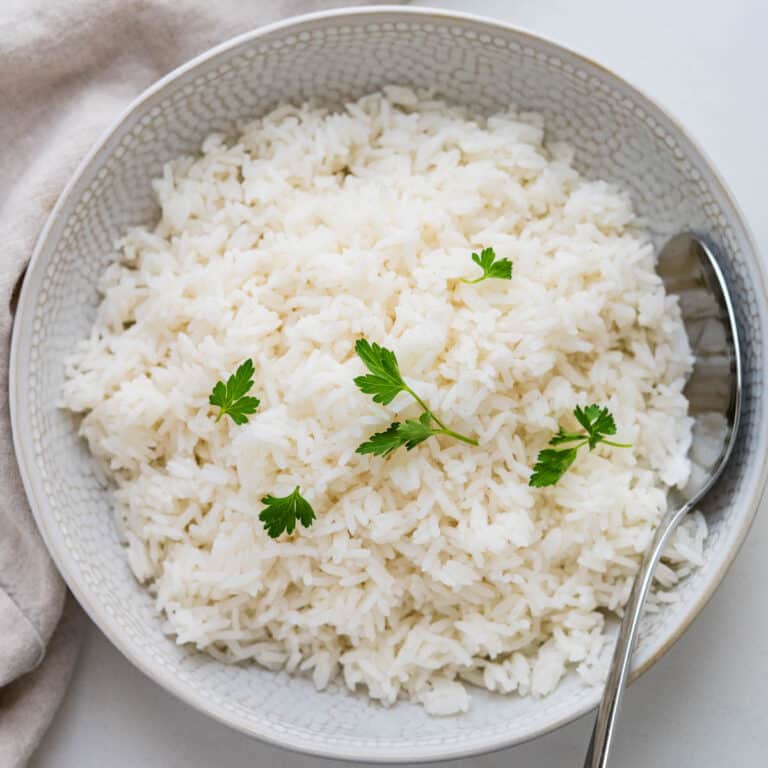
Thank you for sharing the way you cook your Jasmine rice. I tried it your way and it was Awesome !! I will from now only cook my rice your way…
I’m glad it turned out well for you. It’s a great method for cooking Jasmine rice.